Each culture’s symbolism serves as the basis for a whole civilization. The Aztec civilization, like the others, was among the most significant and richest, which had thrived around the globe. Furthermore, Aztec symbols were a part of material culture wherein the ancient civilization articulated its grasp of the physical and spiritual worlds. As people of that culture get older, they internalize the symbolism and its significance. They perceive symbols everywhere about their religion, in their language, in weaving, in jewelry, and on the temple walls.
In addition, the Aztecs also employed symbols to communicate their ideas and experiences of truth. Discover the significance of the most famous Aztec symbols.
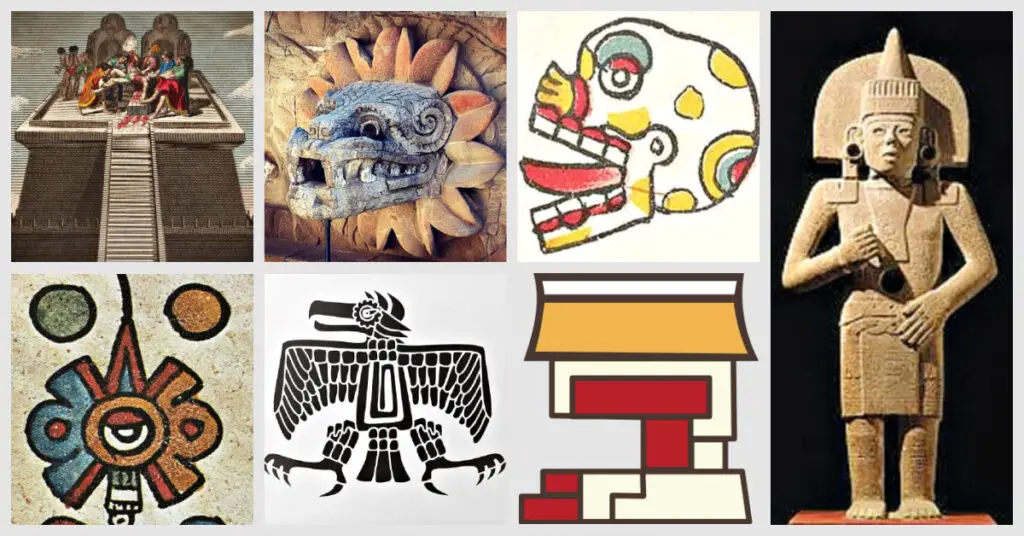
Eagle
The Sun’s Voyage Across The Sky And Power
It is simple to confuse the eagle with another well-known battle emblem, but it is much more profound. The legendary Eagle Warriors are the next most popular Aztec battle caste. Kids born within this zodiac sign were said to have war-like characteristics, including strength, courage, and bravery. Moreover, the eagle was identified with the sun, which, like the eagles, swooped throughout the sky each day, pursuing the darkness as its prey.

Miquiztli
Death, A New Beginning, And An Old Ending.
The Aztec death emblem is Miquiztli. The term miquiztli refers to death or the action of death. It comes from the Aztec term miqui, which means to die. Miquiztli is depicted as a skeleton head or the head of death.
In the Aztec calendar, the Miquiztli day is overseen by Tecciztecatl, the moon god that confers life force. Moreover, the mizquitzli, as a sign, represents metamorphosis or the short period between a new beginning and an old ending.
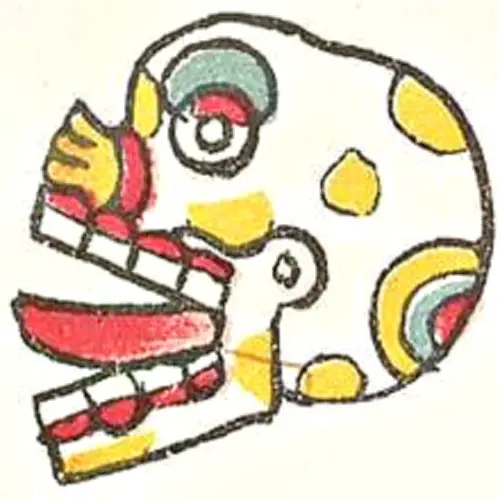
Blood
A Life And Strength.
Blood was a famous emblem of energy and life, mostly in ancient societies. However, it went far beyond that for the Aztecs. People’s blood, they believed, was the stuff that produced the globe’s revolve and maintained the sun shining around the planet.
The Aztecs also thought that the sun was too feeble at nighttime, which is why it journeyed through the underworld. As a result, the sun required blood to sustain its vitality and rise anew each morning.
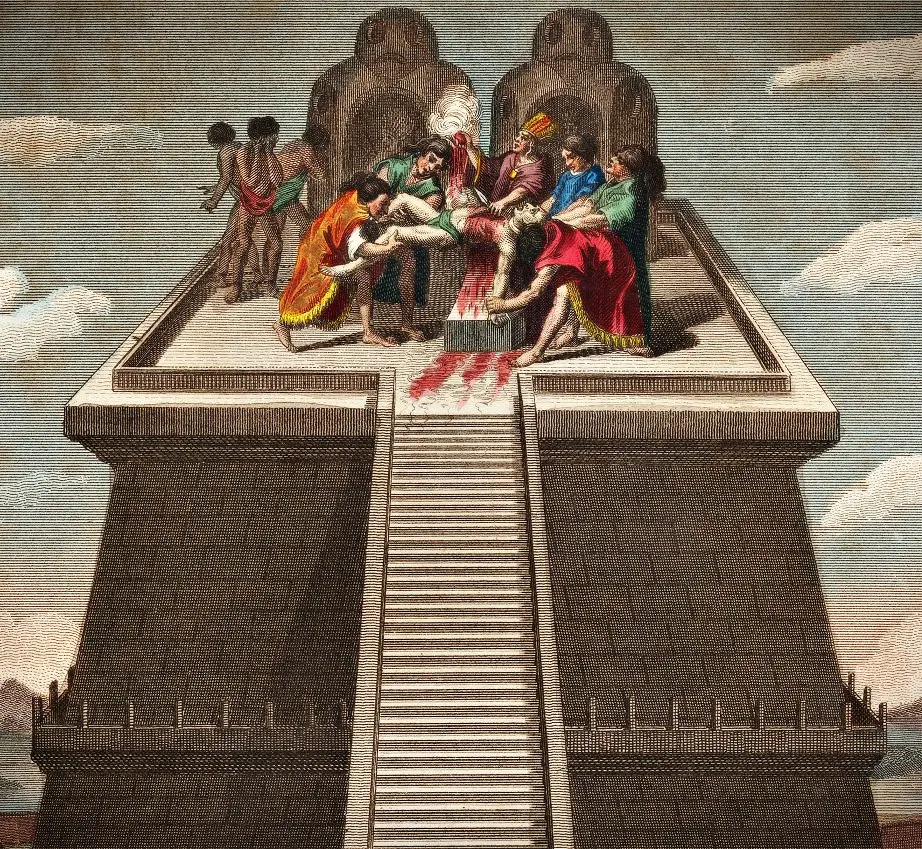
Ollin
Movement And Change.
Ollin, the Aztec deity of sunsets and changing forms, is related to Ollin, the Aztec emblem of mobility, seismic shifts, transformation, and chaos. Ollin signifies motion or mobility, portrayed in Aztec rulebooks as two interwoven lines with two center endpoints each.
Additionally, Ollin is seen as a sign representing four past suns or periods in the historical past, and the sign itself symbolizes the fifth sun above the present planet, which, like the former one, would be destroyed by earthquakes and will cause starvation and darkness.
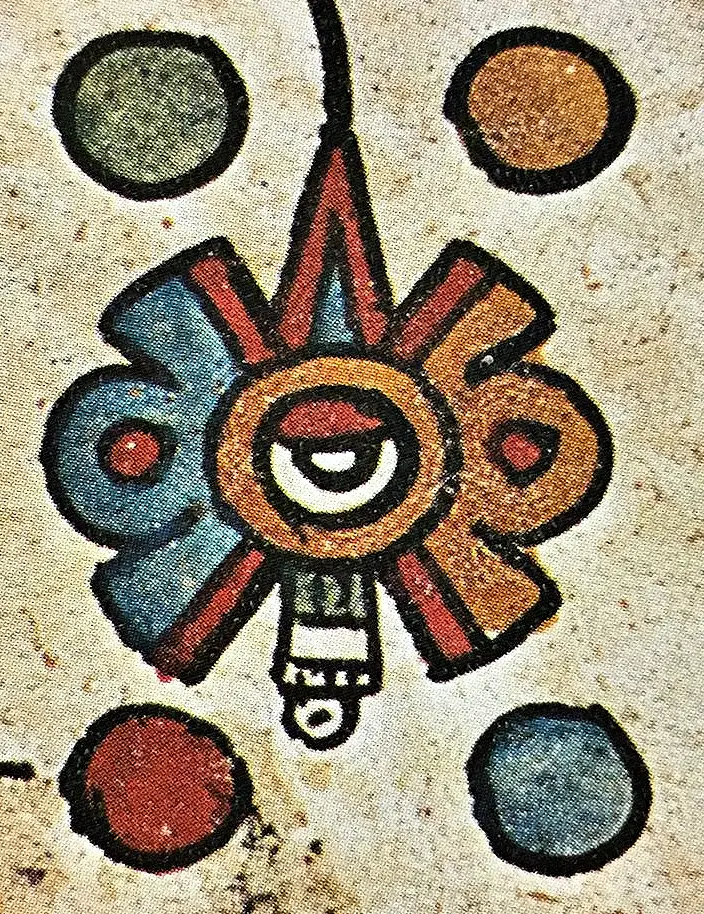
The Feathered Serpent
The God Quetzalcoatl’s.
The Feathered Serpent is a well-known holy emblem in Aztec mythology and culture. Quetzalcoatl was traditionally represented as a brightly colored, feathery amphiptere serpent with two wings and no additional appendages.
Despite not being a battle deity, Quetzalcoatl was the deity most fighters sought to connect with since he was thought to be the first human, which is why he was the sole deity who objected to human sacrifices. Furthermore, feathers and serpents were the most prevalent embellishments, carvings, and decorations affixed to Aztec weapons because they represented the might and power of the feathered Serpent.
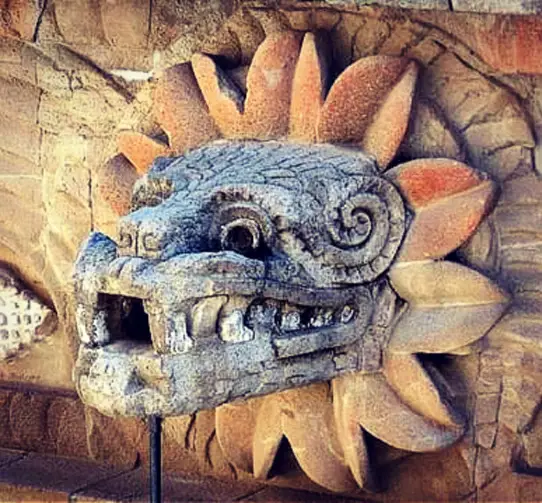
Calli
House, Peace, And Family.
The Aztec sign for the houses is Calli. It is linked to Tepeyollotl, the deity of earthquakes and echoes, as well as darkish caverns and wildlife, particularly jaguars. Tepeyollotl, shown as a jaguar jumping towards the sun, is regarded in Aztec myth as the pulse of the highlands and the eighth lord of the nighttime, also regarded as the deity of the eighth hour of the night. The Calli, or home symbol, represents peace, repose, and family. It was regarded as the day’s defender by the Aztecs.

Papalotl
Change And Transformation.
The papalotl, or butterfly, was a manifestation of Xochipilli, the deity of growth. That relationship was apparent, as were the butterfly’s other metaphorical connotations. The lovely insects also represented a shimmering firelight and transformation, commonly connected with the stars or sun. Then, the Aztecs designated the butterflies to represent human transformation after seeing their metamorphosis.
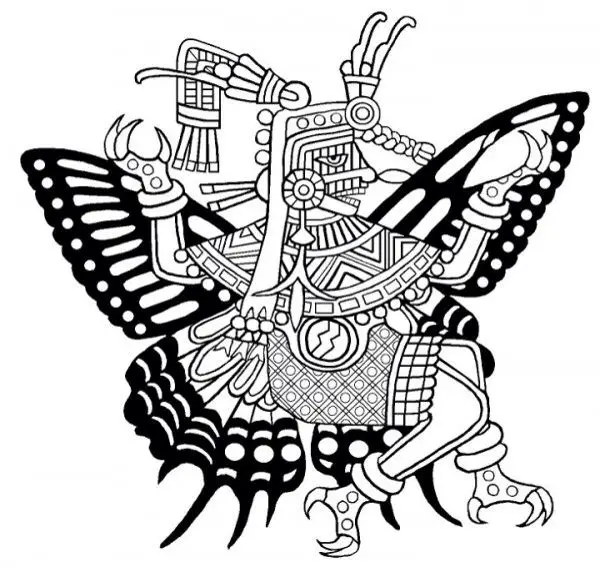
Ehecatl
Wind
In the Náhuatl dialect, ehecatl signifies wind. Ehecatl was linked to all the cardinal points since the wind blew in all areas. It comprises two projecting masks blown by the wind. The day after Ehecatl was associated with irregularity and pride in the Aztec calendar. This was a day for breaking old habits and avoiding close collaboration with others.
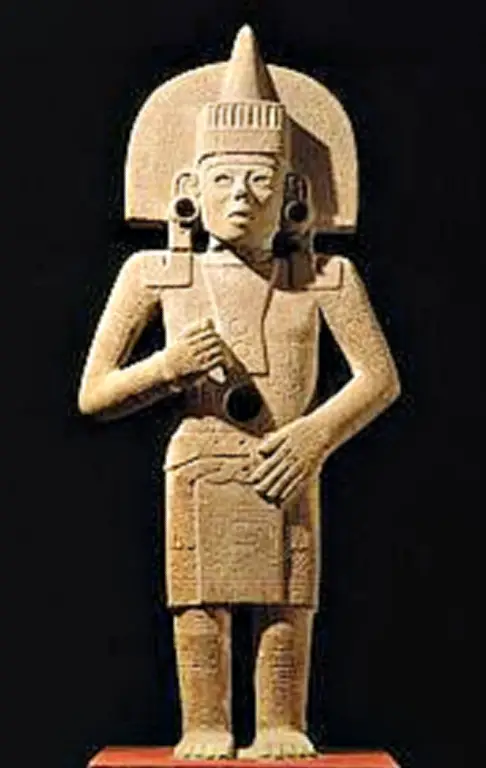
A Newborn Baby
Freedom From Imprisonment
It is incredible how much meaning could be taken from childbirth. It is the most physiologically ordinary and enigmatic for most civilizations and faiths. This beautiful gesture represented several aspects to the Aztecs, including the life span, an overall pleasant event, and a captive attempting to escape imprisonment.
Atlatl
The Spear Thrower And A Warfare And Supremacy Symbol.
Atlal is an old and vital weapon in many Mesoamerican cultures, not only the Aztecs. A spear with a handle on one side and a hook on the opposite is known as an atlatl. The hook is employed to connect the spear, which the jugglers fling like a javelin. Knights in Aztec times utilized this instrument to throw spears at their adversaries. Because Atlatl was such a deadly weapon, it represented combat, strength, and even magical ability for the Aztecs. The sacrificing of the captured enemy was also related to the Atlal emblem.
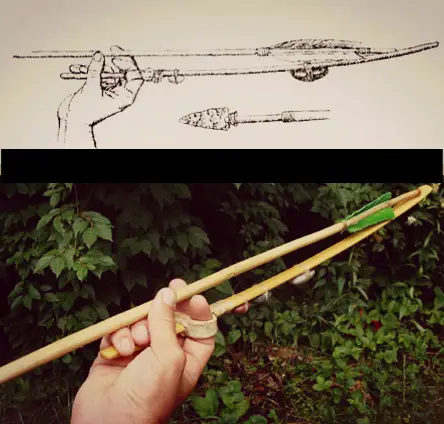
Frog
A Representation Of Renewal, Fertility, And Joy.
The frog, a far more common and joyful emblem, showed happiness. It is still being determined why this is the case, although it is possible that the Aztecs considered frogs humorous. In addition, frogs were a sign of fertilization, the life cycle of restoration, and mortality, as a continuation of the life cycle.
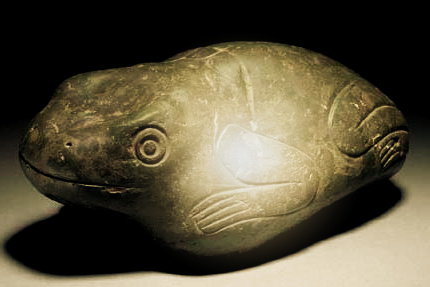
Tecpatl
Stone Knife.
The Aztec Tecpatl emblem was a knife or flinted with double-edged, extended points and a lance-shaped form. Commonly employed for sacrifice in the Aztec periods, the Tepactl knife was also utilized in warfare by the Aztec warrior elites, the jaguar warriors. Tecpatl is associated with the notions of beginnings and human sacrifice. In addition, Tecpatl may be depicted by having half of the tip in blood and the remaining half in white. These colors represent human sacrifice and the hue of a flint blade.
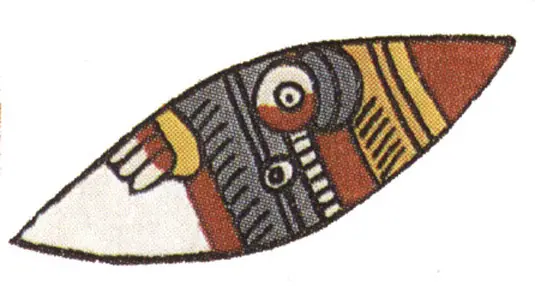
Footprints
A Representation Of Somebody’s Voyage Or The Passage Of Time.
Even mundane things like people’s footsteps on the ground were prominent symbols in Aztec living, art, and language. They were often utilized in literature and cinematic techniques as a sign of the passing of time.
They did, however, reflect both actual and figurative travels. Footprints were frequently employed to demonstrate how significantly somebody has developed and how far they have gone.
.
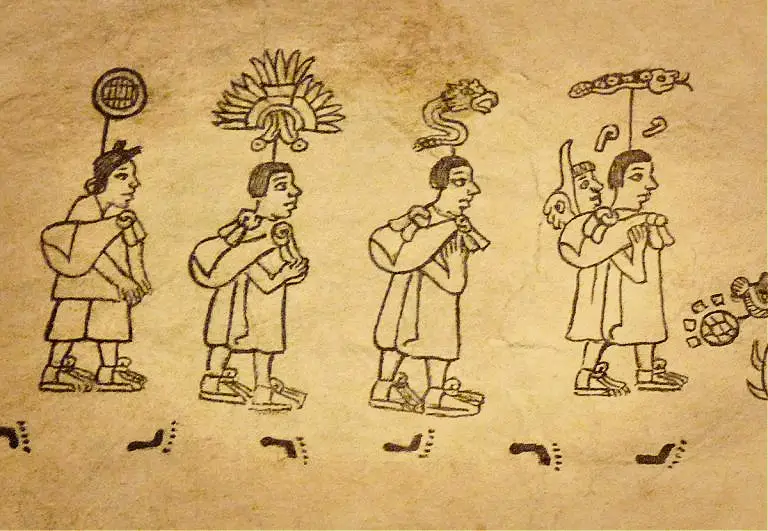
Conclusion
Like InCa, Maya, and other significant South American and Mesoamerican civilizations, the Aztec culture was immersed in cultural and religious symbolism. Allegories, analogies, and symbolism were the foundation of every aspect of Aztec society. Moreover, the Aztec symbols, either naturalistic or spiritual, reveal much about this ancient civilization and its way of living.
